
 |
|
#1
|
|||
|
|||
|
I recently had the pleasure to learn of IRME, a film project based in Bodrum, Turkey through its creator, Mert Gokalp. The short film deals with sponge diving and the passage of this way of life into the past as a result of the sponge blight. The impacts of the sponge blight have been significant in this coastal fishing town and many other similar towns throughout the Aegean Sea.
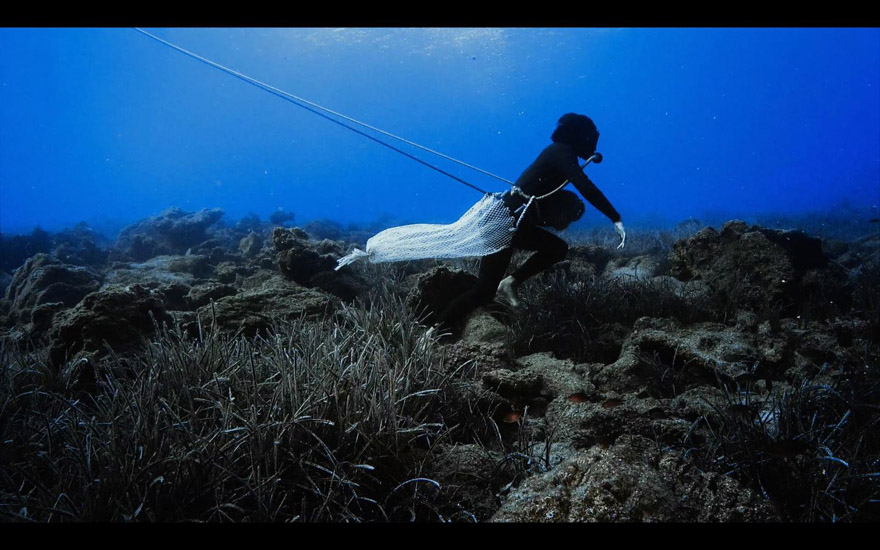 The film conveys messages on several levels. The primary conflict is between a boy longing to dive and work in the sea, his father a sponge boat captain who wants him to stay on land and the boy's mentor, a renowned sponge diver, now crippled for life after a bad case of the bends. On other levels the film treats the fading into the past of this fishing town to be replaced with a tourist destination rife with resorts and night clubs. Finally it offers some insights on new ecological imperatives likely brought on by climate change and poor resource husbandry practices. Mert wanted to show the Bodrum of the past along with the dramatic stories of divers, with so many lost and injured working the sea. Production photos are from the film's Facebook page at https://www.facebook.com/pages/IRME/1477722369146756 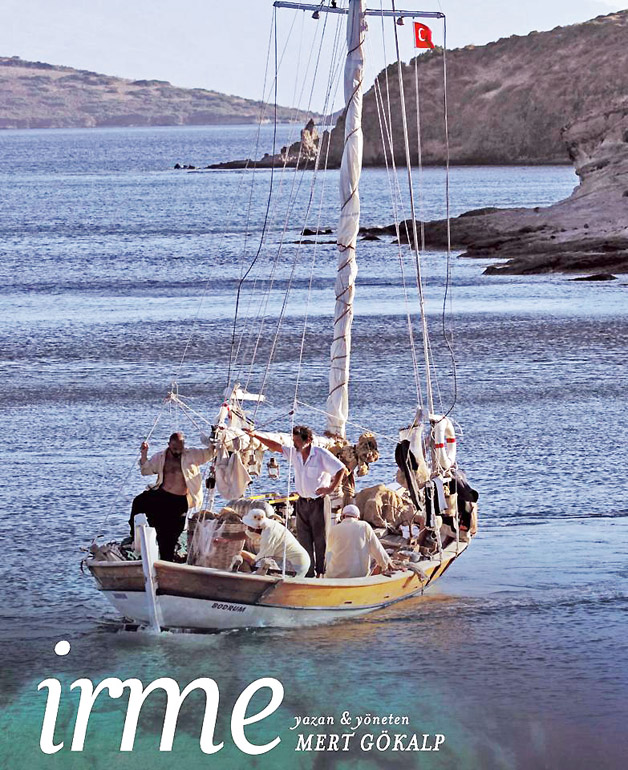 IRME's setting involves a boat and its working crew in the middle of the Mediterranean sea in the 1970s on the brink of the collapse of the sponge fishery with a blight wiping out stocks. The father also a sponge captain, never wanted his boy to work on the sea for many reasons. The trials, high risk of injury and death including some family and friends in the past, makes him want his son to take up farming on land instead. The boy finds work in another boat driven by his longing for the sea. The boy learns diving from the cripple Omer, a famous diver working on that boat who suffered paralysis from the bends. Time passes and the cripple and the boy end up working on the father's boat. There is an acute sponge shortage with dive after dive resulting in no sponges being found. The crew is upset with building frustration with no prospect in sight but to continue searching. The mounting tension among the captain/father, the boy and the cripple, conveys the viewer into the desolation of the broad sea, barren bottom with the harsh realities of the changing times. 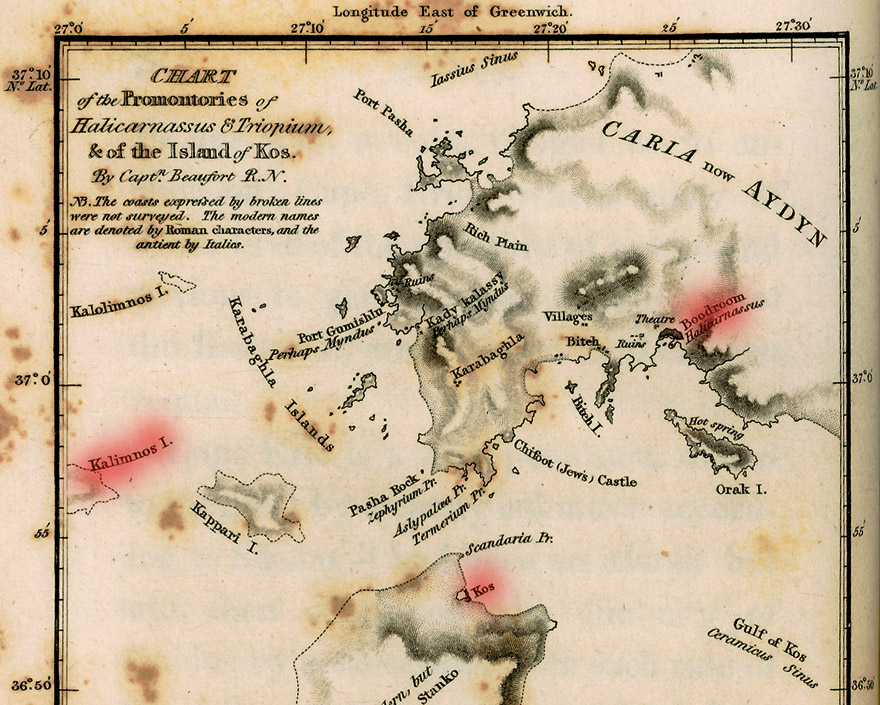 Part of an 1817 chart showing the southeastern Aegean Sea containing Bodrum, Turkey to the east, the focus on this film. Also the Greeks islands of Kos to the south and Kalminos, center of sponge commerce to the west are highlighted on the chart. Kalminos was the commercial center of the sponge industry for the region. Sponges recovered by the Bodrum fleet were ultimately sold in Kalminos which exercised considerable influence on the area. 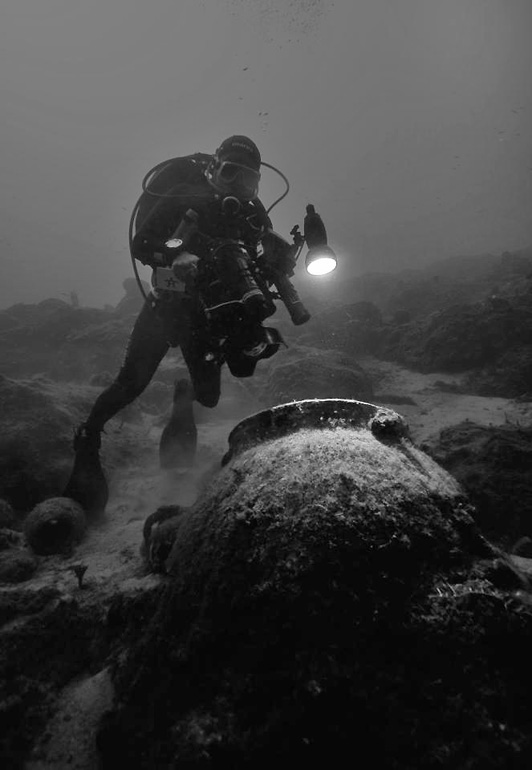 Mert Gokalp is the director, script writer and underwater DOP for the film. He is a marine scientist, photographer/videographer and documentary maker born in Ankara, 1978. He did graduate work at South Florida's own RSMAS institution in Miami. He is currently working on his PHD through the University Of Wageningen. He worked as a marine biologist in 6th & 7th frame European Union projects. He produced 4 individual photography exhibitions along with a guidebook for Turkish Marine Species & a smartphone application for Mediterranean marine species called ‘Doga Rehberi’. He has been working as a freelancer since 2006 involved in nature documentaries as an underwater camera operator; Labyrinth-VPRO, Sponges & Corals episodes - HET KLOKHUIS - NTR, Caretta caretta - IZTV. Currently working on 2 underwater documentaries and an underwater photography project. Mert is shown above loaded for bear with underwater tech, shooting amphora on a wreck off Kas, Turkey. 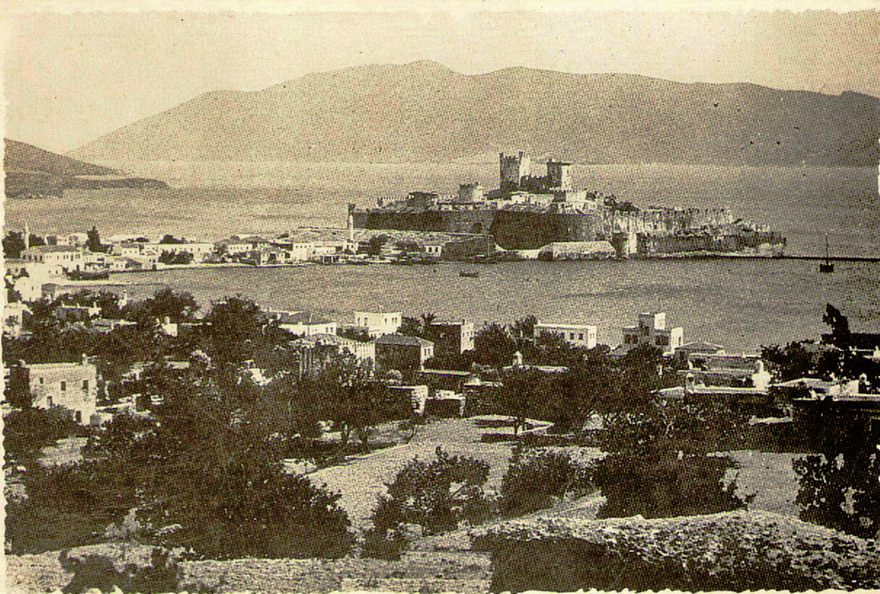 A look over Bodrum towards the Bodrum Kalesi or castle from the 1950's. The castle construction was started in 1402 by the Knights Hospitaller as a secondary stronghold to their castle on nearby Rhodes. Today the castle contains the unique Museum of Underwater Archaeology created by the Turkish government in the early 1960's to house the numerous undersea finds from the Aegean. Many of these discoveries were made by sponge divers. There are exhibits dealing sponge diving in this museum. From: http://www.xanthosyachting.com  Through time, sponge diving has been the cause of great wealth, shifting of population centers, creation of lifestyles through generations, development of new diving technologies as well as painful injury, disability and death. The conflict between seeking profit, human limitations and diving physics has long taken a toll in this fishery. 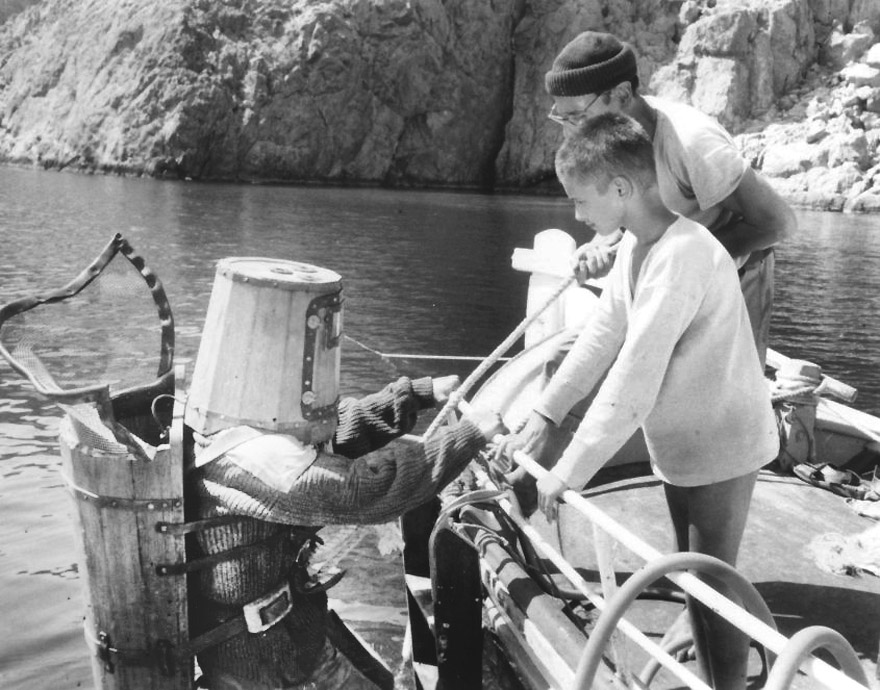 In a number of ways the film reminds me of aspects of Luc Besson's "The Big Blue," originally "Le grand bleu" of 1988. The film has become a cult classic among free divers everywhere and is a personal favorite as well. To see another work, even a short film delving in this area is of strong personal interest. Above is the scene involving Jacques Mayol's father employing particularly primitive surface supply diving technology. From: http://www.imdb.com/title/tt0095250/ 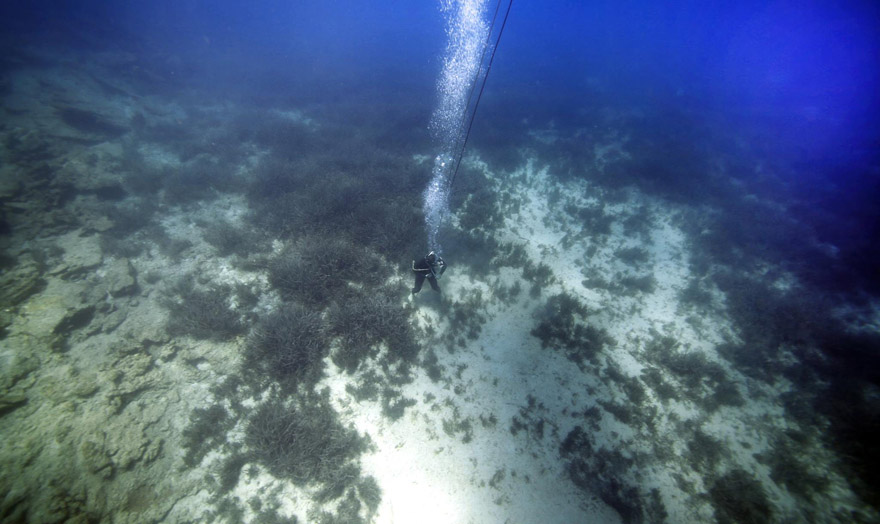 Mert is at depth preparing for the shooting of a scene. He told me that historically sponge dives were made down to 80 to 90 m (260 to 290 ft.). There were two classes of divers, those diving the more heavily harvested shallow areas and those working the deeper zones with greater risk of DCS and other barotrauma. There were three to four divers per boat depending on the size of the vessel. The dives were relative short with 15 to 30 minute bottom times but with poor decompression practice, too rapid ascent, no or inadequate stage decompression, they were set up for problems. Inadequate decompression brought on by too rapid ascent can cause nitrogen bubbles to form in the diver's body which can cause blockages in blood vessels, joints and pinch nerves resulting in pain and paralysis. The symptoms of decompression sickness or DCS are largely dependent upon where the bubbles occur and interfere with function. The bends arise from bubbles in joint areas and from pinching nerves. Other types of DCS can develop from bubble blockages in the brain, heart and other nerve areas such as related to vision. There are still other types of barotrauma or pressure related disease which impacted the divers such as nitrogen narcosis (azot narkozu), impairing judgement, oxygen toxicity (oksijen zehirlenmesi) related seizures, aero embolism (aero emboli), prompted by excessive speed of ascent, long term bone joint degeneration through Dysbaric osteonecrosis (Dysbaric osteonekroz) and still more. There were no hyperbaric treatment centers with decompression chambers or likely even well informed and equipped medical care. The divers were largely on their own to try to avoid and deal with the consequences of barotrauma. There is a famous sponge diver in Bodrum, Aksona Mehmet who was an active scaphandro diver and carries the nick name "the last sponge diver." His nickname "Aksona" was taken from his sailboat but also is the name that deals with diver decompression. He has been diving for the last 50 years and must have learned safe ways to pursue aksona in that time.  Prevention of DCS is an involved process but at the basic level requires use of decompression tables that prescribe decompression stops for specific durations and certain depths to allow the safe "off basing" of nitrogen. Such tables were brought to Bodrum in the 1960's I understand from Mert by two men who taught scuba diving. More divers started to use scuba gear instead of hookah rigs and accidents diminished somewhat. For most of the time though no deco tables were used only experience and if what I have encountered in other parts of the world holds, some degree of superstition. I met a commercial spear fisherman in the Bahamas who doesn't use deco tables or dive computers now that they are available but a "feeling" reinforced by long experience. He has been hit or suffered the bends a number of times which unfortunately can be cumulative with the same areas being impacted over and over again. He never contemplated recompression in a chamber which is the best way of treating DCS but did swear by the benefits of Bayer aspirin, "use no other." I once knew a scientific diver when I was a kid in the early 1970's who used to say, "decompression tables, bah, it is something you feel in here" as he beat his chest. I think he was recompressed nine times before they banned him at the hamber. Human nature can be a hard thing to overcome in short and can carry a high price in trials and pain but so it goes.  IRME is an all volunteer project, including actors, boats, sets, gear, editing and production. Mert and the crew seemed to work more than a little magic in bringing this project to life despite significant adversity. Even though there was no budget the underwater shoots were conducted at a safe, professional level. All divers were trained and certified, dive computers were used by all, two safety divers were employed during critical shoots. As a result of careful planning and implementation, there were no in-water accidents or incidents during the film. There were many challenges in the shooting of the film however and with no budget to help surmount problems. For instance they started out with IRME, the sponge boat highlighted in the movie. Plus they had a 12 m trawler support boat and one of the last working hookah boats in Bodrum. The later two boats were withdrawn from the project due to family problems plus two of the three production divers were to come with the vessels who were also lost to the project. They were to have some aerial photography which also fell through. Despite the setbacks the crew completed the project and very well to from what I can see in the trailer.  Mert told me that the nice (remarkable) thing was this was done without spending money at all. "Whomever we went to, everybody supported us with something, the looking glass (AYNA) was constructed by a local guy. The protection cage for the propeller, sponges, suits were given by an ex-sponge diver, the sailing devices, sail and etc. was given by some local boat builders. The historical decoration was given by our friend whom was an ex-antique guy. All the crew in the movie are friends although Omer and the captain are actors in Turkish National Theatre." 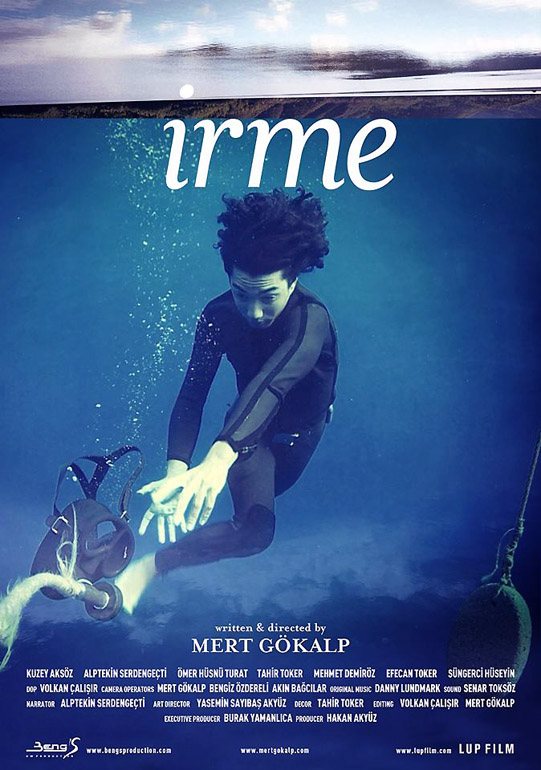 Kuzey aptly demonstrates one downside of hookah setups, the parting of the diver from his air supply. There are many ways in which this can come about with the safe resolution of which up for grabs depending on how things work out. One of the best fortunes was finding Kuzey (the boy diver) who was 15 years old then. He was a son of a friend. Originally the role would belonged to a prize winning actor/director and professional diver. Tragically he was shot through the arm during the GEZI protests in Taxim, Turkey last year. This happened just a week before shooting was to start and caused him to miss the entire project as he was in rehab at the time. Mert was looking all over for a replacement, he saw Kuzey and asked him if he can dive and want to be in a movie? He said I would love it! Mert took him diving to see his capabilities next day. Mert described how to hold the stone, his fins and walk and Kuzey pulled it off perfectly first time. What an amazing story of commitment, community support and luck! In addition to Mert the crew consists of actors: Alptekin Serdengecti, Born in 1961, Ankara, graduated from Mimar Sinan Conservatory Theater Dept. Actor at National Theathre of Turkey in 1985-2009 period. Omer Husnu Turat, Born in 1969 Ankara, graduated from Mimar Sinan University Conservatory Theater Dept. Actor at in National Theathre of Turkey since 1997. Kuzey Aksoz, Born in Istanbul in1996, studied in Bilfen Collage for the primary & secondary schools. He is a professional kite surfer and ‘IRME’ is his 1st appearance as an actor.  The production team includes: DOP: Volkan Calisir, Born in Istanbul, 1980. Started photography at the age of 7, studied photography & video in Istanbul Bilgi University with full scholarship and also studied advertising in Istanbul University. Camera Operator: Bengiz Ozdereli, Born in Istanbul, graduated from Istanbul Technical University as an architect & designer. He started his career as an underwater videographer in 1992. He has 38 awards in national & international videography & film festivals and attended many festivals as jury and jury head. He has a production company and working with TV & film production companies worldwide as providing underwater productions. Camera Operator: Akin Bagcilar, Graduated from cinema department of Maltepe University in 2008. He is still working in Beng’S production company in music clips, advertisement, TV series & film projects as underwater camera operator & editor. Art Director: Yasemin Sayibas Akyuz, Born in 1973, in Tokat. Studied textile engineering and then graphic design. She has been designing for companies around the globe for the last 15 years. Producer: Hakan Akyuz, Hakan was born on 30th of November 1970 in Istanbul. He is working as an independent designer and marketing strategist for USA based companies last 15 years. He also have 10+ international awards regarding web and graphic design. 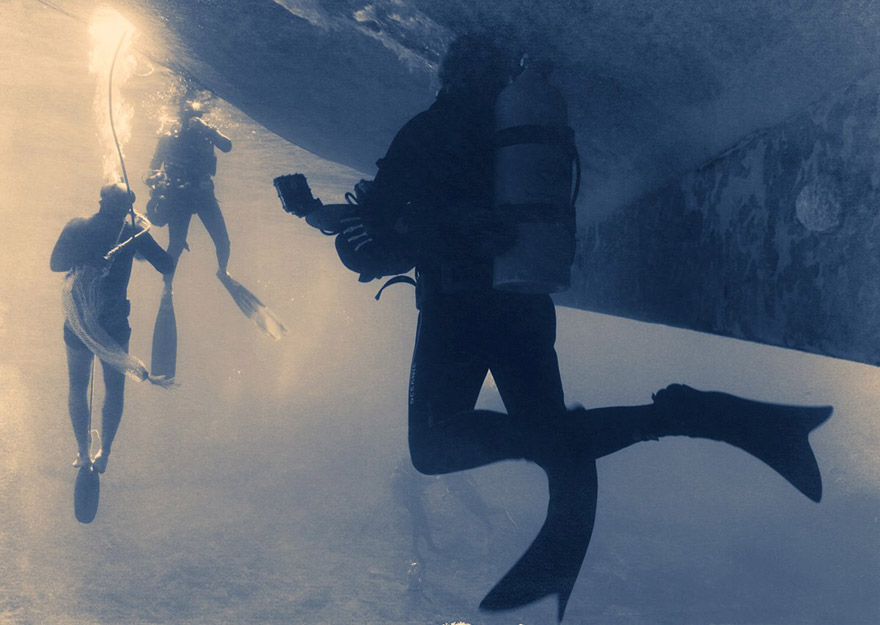 IRME Essential Information Director/Writer Mert Gokalp Producer Hakan Akyuz/Mert Gokalp Production Company Lupfilm, Beng’shark Technical Information mov. HD Film Ratio: 16;9 Sound: Stereo Running Time 17.39 minutes Country of Production Turkey Date of completion September 2014 Sales & Marketing Hakan Akyuz / Burak Yamanlica email burakyamanlica@gmail.com Tel: +90 ; hafromhttg@gmail.com Tel:+905063364392  A typical bottom scene with nice blue water visibility.  The diver holds a skandalopetra stone or petra for short. This centuries old diving tool is of marble or granite, weighing between 8 and 14 kg (about 15 to 30 lbs), with rounded corners with a fusiform hydrodynamic shape. The petra had been in use by divers for about the last 2400 years in the Mediterranean Sea. 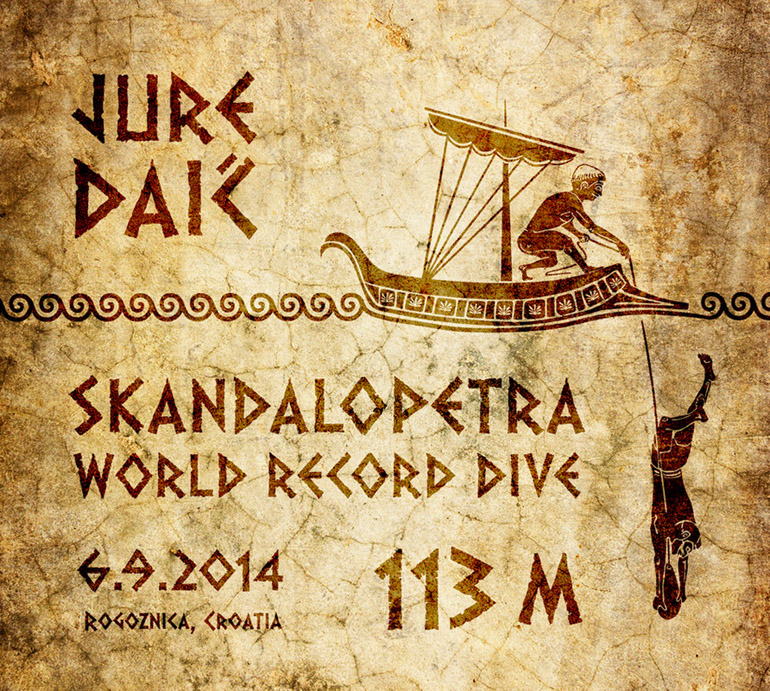 From: http://www.skandalopetra.h2oteam.com The mechanics of skandalopetradra diving including recent competitive diving adaptions are explored in depth at http://rrtc.at/aktivskandalopetra-en.htm and http://www.sualtiavcisi.com/forum/vi....php?f=4&t=551 This would be of interest to free divers in particular among other divers, watermen and the curious in general. 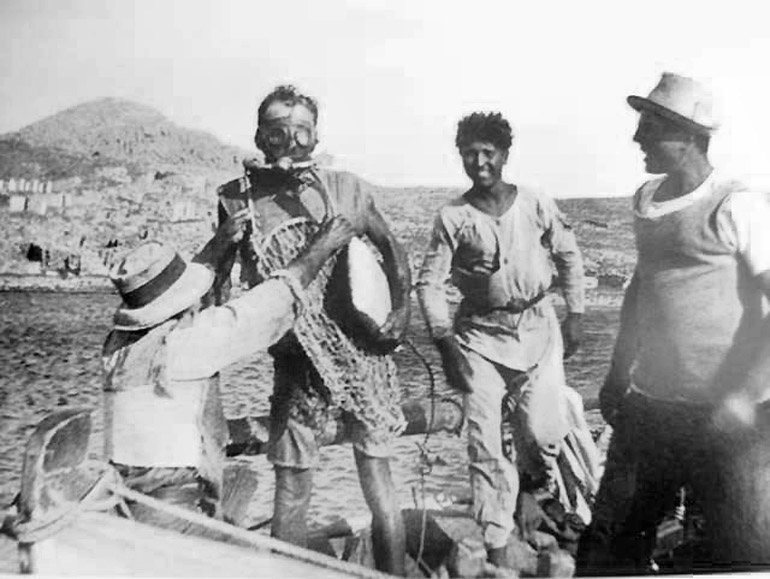 A period photo of a nargileh or hookah diver wearing a Fernez mask using a skandalopetradra stone and assisted by his Kolaouzieris in preparation for a descent. From http://bit.ly/1n7UWbr (translated from Russian to English) 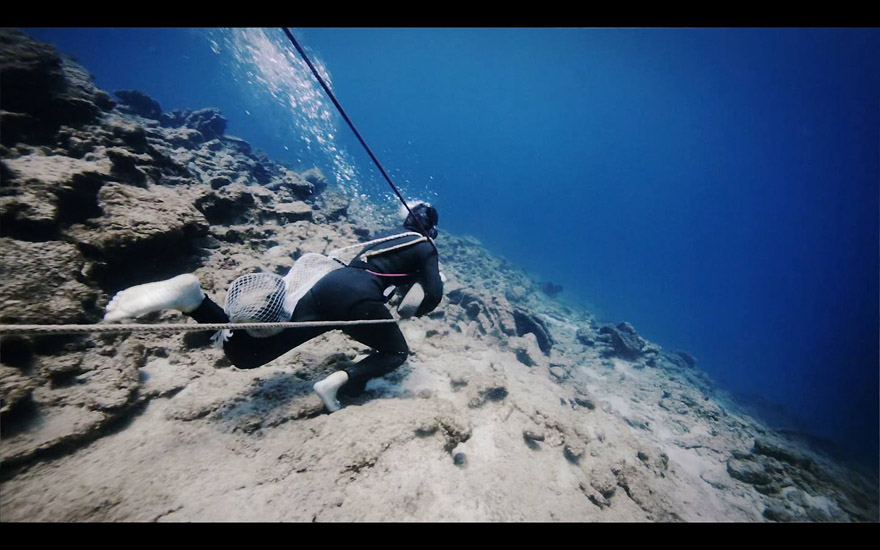 The evolution of sponge diving technology from breath hold naked or skandalopetradra diving to hard hat diving or scaphandro in the 1860's. It has been estimated that there may have been 10,000 diver fatalities in the fifty years of scaphandro use in the Mediterranean Sea. Part of the problem was the long term belief from skandalopetradra or naked diving that a rapid ascent was the best. This practice was continued with compressed air even with all the mortality and injury. In time the cumbersome hard hat apparatus was replaced with a more portable type of surface supplied air, the hookah or nargileh rig feeding a Fernez mask. The nargileh or hookah rig was the mode of diving used in this film. Finally, in the 1960's sponge divers started to transition to scuba diving. There is an excellent article on the subject of changing technology in sponge diving and barotrauma at http://www.alertdiver.com/The_Story_of_Sponge_Divers  The captain and the former diver now cripple from a severe case of the bends. With the technological advances brought by scaphandro surface supplied air a sponge gold rush ensued in the Aegean in the mid 1800's. This resulted in depletion of sponge resources around the Greek and Turkish islands driving the sponge boats out into the Mediterranean to work the north African coast for ever increasing periods of time. This resulted in more hardship, fatalities and injury among the divers. 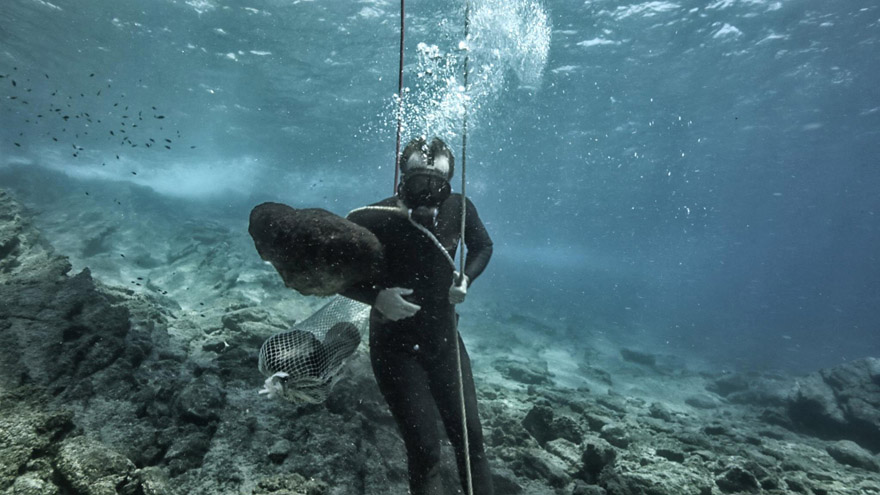 Mert preparing for a shallow scene riding the skandalopetra stone off along the bottom. A short trailer from the IRME providing an insight into the setting and emotion of the piece. https://vimeo.com/106506540  A 1950's view across Bodrum harbor from the castle. Note the abundant period sailing craft, the means of making a living in those times. From: http://www.xanthosyachting.com 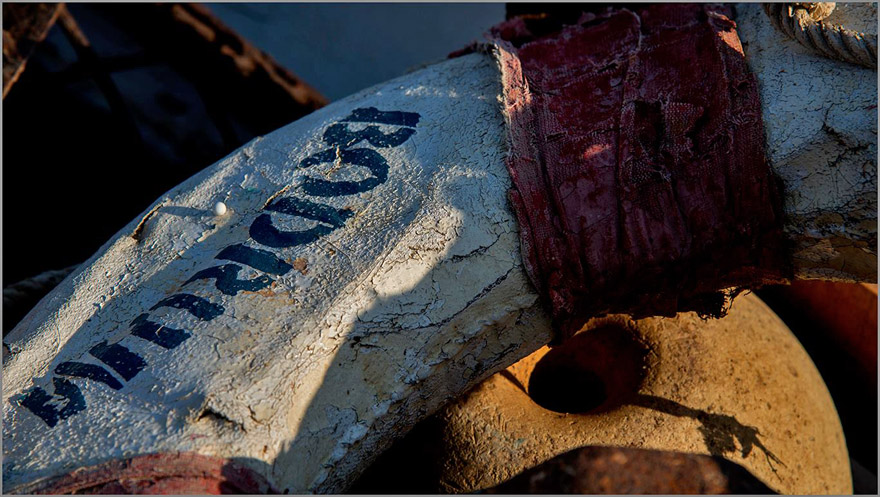 The film has a dedication: "Bodrum was the place for one of the bravest sponge divers many of them died, many of them got the bends and this story is dedicated to them and; the curse in their mouth.. the ambition in their eyes.. and the love they bear upon the sea.."  They plan to enter to film into various festivals in 2014 and 2015. After which Mert will likely setup more expanded distribution through DVD's, downloadable format, etc.. For now the film is to be shown in the following festivals with more to follow: Antalya Golden Orange International Film Festival Sep 20 - Sep 27, 2014 http://www.filmfestivallife.com/Anta...-Film-Festival 41ST EDITION OF THE UNDERWATER FESTIVAL also known as Antibes Underwater Film Festival 30 October - 2 November 2014 Marseille - France http://www.underwater-festival.com/e...t-edition.html Clermont-Ferrand Short Film Festival http://www.clermont-filmfest.com/index.php?m=133 January 30 to February 7, 2015 Visit the IRME Facebook page for additional showings and distribution at: https://www.facebook.com/pages/IRME/1477722369146756 and Mert's webpage devoted to the project at: http://www.mertgokalp.com/irme-the-short-movie/ More about the sponge blights that have plagued the sponge fishery in the Aegean in: "Fast-Spreading Blight Cripples Mediterranean Spongers' Livelihood" http://articles.latimes.com/2000/dec/24/news/mn-4109 More about sponge diving in the region can be found in Dr. Sue Papadakos' book, "SPONGE DIVERS The legendary fishermen of the Aegean"  Walking off into the past or ... time will tell. There are new concepts in mariculture in combining growing sponges with fin fish farming in a controlled setting which might bring sponging back to Bodrum. Let's hope so and in the meantime, I am looking forward to viewing the film. . Last edited by ricki; 10-07-2014 at 06:07 AM. |
 |
|
|